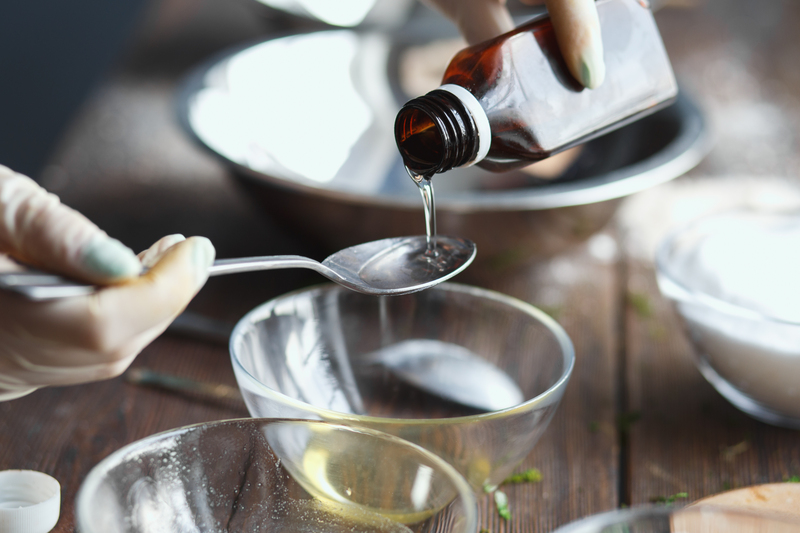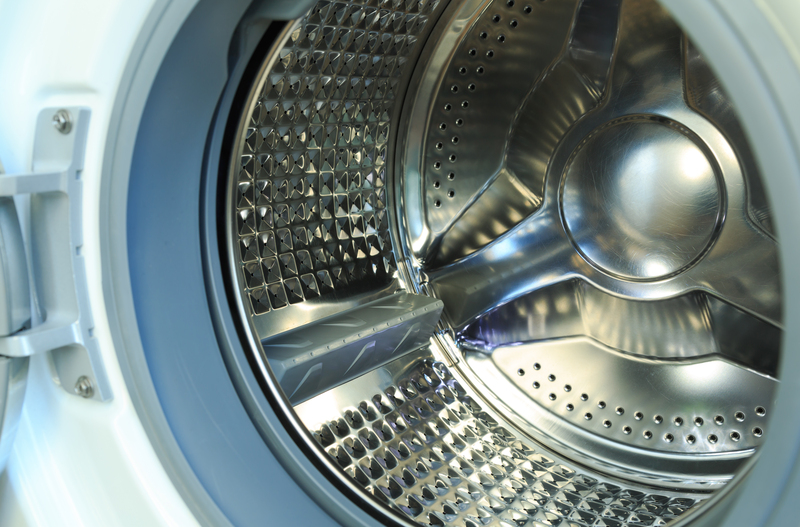Discover the Art of Washing Sofa Covers Without Risk
Posted on 10/09/2025
Discover the Art of Washing Sofa Covers Without Risk
Your sofa is often the heart of your living space—a hub for entertaining, relaxing, and everyday life. Over time, sofa covers can collect dust, spills, pet dander, and unwanted odors. To maintain your sofa's appearance and hygiene, knowing how to wash sofa covers without risk is a valuable skill. In this comprehensive guide, we'll unveil the secrets of safely cleaning all types of sofa covers and help you master the art of washing sofa covers risk-free.

Why Properly Cleaning Sofa Covers is Essential
Sofas are substantial investments and often become cherished household items, so refreshing their covers safely is important for both aesthetics and health. Here's why cleaning sofa covers properly matters:
- Prolongs the sofa's lifespan: Regular washing removes dirt and grime that can wear down fabric fibers over time.
- Removes allergens: Dust mites and pet hair trapped in fabric can trigger allergies or asthma.
- Maintains freshness: Clean covers banish odors and return your sofa to like-new condition.
- Preserves colors and texture: Proper cleaning techniques prevent fading, shrinking, and fabric damage.
Let's explore how to wash sofa covers without risk and keep your living space inviting and healthy.
Step 1: Identify Your Sofa Cover Material
The first step in mastering the art of cleaning sofa covers is understanding what material you're dealing with. Materials commonly used for sofa covers include:
- Cotton and Linens: Natural fibers that are often machine-washable but may shrink if washed incorrectly.
- Polyester blends: Durable and resistant to wrinkles, usually safe for machine washing.
- Velvet: Luxurious and plush, but requires gentle care to avoid flattening or crushing the pile.
- Microfiber: Known for stain resistance, generally easy to clean but may have special instructions.
- Leather or Faux Leather: Should not be machine-washed; clean with specific leather products or wipes.
Pro Tip: Always check the manufacturer's label under cushions or on interior seams for cleaning instructions. Look for codes:
- W: Water-based cleaning
- S: Solvent/ dry-clean only
- WS: Water or solvent
- X: Vacuum or brush only, no water or solvents
Step 2: Preparation Before Washing Your Sofa Covers
Proper preparation is key to washing sofa covers safely. Before you toss anything in the wash, follow these crucial steps:
1. Vacuum and Remove Debris
- Use a handheld vacuum or upholstery brush to remove dust, crumbs, and pet hair from all surfaces.
2. Address Stains Immediately
- Spot treat visible stains with a fabric-appropriate cleaner. Blot, don't rub, using a clean, damp cloth.
3. Remove Covers with Care
- Unzip or unbutton cushion covers carefully to avoid tearing seams or damaging zippers.
4. Close Zippers and Velcro Straps
- This prevents snagging and damage during the wash cycle.
With your covers prepped, you're ready to learn how to wash sofa covers without risk of shrinking or fading.
Step 3: Select the Ideal Washing Method
Choosing the right method depends on your sofa cover's fabric and care label. Here are the safest strategies for washing sofa covers without causing damage:
Machine Washing Sofa Covers
- Turn covers inside out to protect the exterior surface.
- Wash in cold or lukewarm water--hot water can lead to shrinking and fading.
- Use a gentle/delicate cycle to reduce agitation.
- Choose a mild, non-bleach detergent for sensitive fabrics.
- Never overload the machine: Wash cushion covers separately if necessary for thorough cleaning and to prevent twisting.
Hand Washing Sofa Covers
- Fill a bathtub or basin with cold or cool water and mix in a small amount of mild detergent.
- Gently agitate the fabric and avoid excessive rubbing.
- Let the covers soak for 15-30 minutes for deep cleaning.
- Rinse thoroughly until water runs clear.
Dry Cleaning and Spot Cleaning
- For dry-clean only fabrics, take covers to a professional cleaner.
- If spot cleaning is needed, use an upholstery-approved solvent and test it on a hidden area first.
- Follow the product's directions to avoid discoloration or damage.
Important: Never wash leather, faux leather, or suede covers in water. Wipe these with a soft, damp cloth and use cleaners designed for the specific material.
Step 4: Drying Sofa Covers Safely
Drying is often where mistakes happen. Here's how to dry sofa covers without risk of shrinking, warping, or fading.
Air Drying for Best Results
- Lay covers flat on clean towels or hang on a line, avoiding direct sunlight, which can fade colors.
- Reshape while damp to prevent shrinkage.
- Never wring out covers--blot gently if needed.
Machine Drying: Use Caution
- If machine drying is allowed, choose the lowest heat setting or "air dry."
- Remove covers while slightly damp to finish air drying on the cushions for a snug fit.
Step 5: Reassembling Your Sofa Covers
Once your covers are dry, it's time to put everything back together. Here are the best practices:
- Replace covers while they're still a bit damp: This helps the fabric mold to the cushions and remove any stubborn wrinkles.
- Gently stretch into place: Avoid tugging to prevent damage to seams or zippers.
- Zip or secure fastenings: Smooth the fabric and enjoy your refreshed sofa.
Special Considerations for Delicate and Designer Sofa Covers
Delicate or expensive covers, such as those made from silk, wool, or designer textiles, may require professional cleaning. Always consult the care label or manufacturer. If in doubt, spot test any new cream or solvent on an inconspicuous area.
Tips for Working with Designer Covers:
- Never experiment with harsh chemicals or bleach.
- Handle with clean, dry hands to avoid transferring oils or dirt.
- Store spare covers in a cool, dry place when not in use.
How Often Should You Wash Sofa Covers?
Frequency depends on your household and the amount of use your sofa gets. Follow these guidelines for a risk-free sofa cover cleaning schedule:
- Every 3 to 6 months: Most households
- Monthly: If you have children or pets
- Spot clean immediately: After spills or stains
Common Mistakes to Avoid When Washing Sofa Covers
Even with the best intentions, errors can happen. To wash sofa covers without risk, avoid these pitfalls:
- Ignoring the care label: Always read it before you start.
- Using hot water or high-heat drying: This causes shrinking and color loss.
- Utilizing too much detergent: Excess soap can leave residue and attract dirt faster.
- Skipping spot tests: Always test cleaners on a hidden area first.
- Overloading the washing machine: This leads to incomplete cleaning and twisting or tearing of covers.
Eco-Friendly and Hypoallergenic Cleaning Tips
For families with sensitive skin or environmental concerns, it's possible to wash your sofa covers without risk to your health or the planet.
- Choose fragrance-free and dye-free detergents.
- Use natural stain removers such as baking soda, vinegar, or lemon juice (after spot testing).
- Limit chemicals by opting for gentle, plant-based soaps.
- Dry outdoors (away from direct sun) for a natural fresh scent.

Frequently Asked Questions: Mastering the Art of Washing Sofa Covers Without Risk
1. Can All Sofa Covers Be Machine Washed?
Not all sofa covers are suitable for machine washing. Always check the care label. If it's labeled "dry clean only," or "X," stick to professional or dry methods. For most cotton, polyester, and microfiber covers, machine washing is safe with the right settings.
2. What's the Safest Way to Remove Stubborn Stains?
Use an enzyme-based or upholstery-specific stain remover. Blot, don't rub, and test any treatment on a discreet area first.
3. Will Washing Sofa Covers Cause Them to Shrink?
Shrinkage is possible, especially with natural fibers or hot water. To avoid risk, always use cold water, gentle cycles, and air dry for the best results.
4. Can I Use a Steamer on Sofa Covers?
Steamers are safe for most upholstery fabrics (except leather) and can remove wrinkles or refresh fabric between washes. Check manufacturer advice first.
5. How Do I Maintain My Sofa's Appearance Between Washes?
- Vacuum regularly to remove dust and hair.
- Rotate cushions to distribute wear evenly.
- Spot clean stains immediately for easier removal.
In Conclusion: The Secrets of Washing Sofa Covers Without Risk
By following the proven steps outlined in this guide, anyone can discover the art of washing sofa covers without risk of damage, shrinking, or fading. Remember to always:
- Check care labels before cleaning
- Prepare by vacuuming and treating stains in advance
- Use gentle washing and drying techniques
- Handle reassembly with care
With a little attention to detail and regular maintenance, your sofa covers will stay looking and feeling fresh for years. Safe, thorough cleaning isn't just about appearances--it's about protecting your investment and creating a healthier, more comfortable home.
Start putting these tips into practice and enjoy the confidence that comes with truly mastering the art of sofa cover cleaning without risk!





